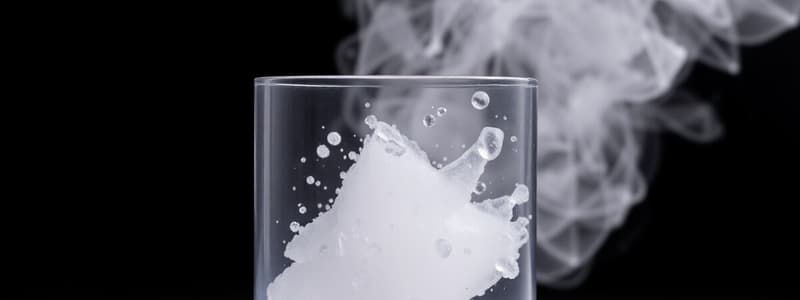Podcast
Questions and Answers
The density of a substance is defined as the mass of a unit volume of that substance.
The density of a substance is defined as the mass of a unit volume of that substance.
True (A)
The density of water is 0.5 g/cm³.
The density of water is 0.5 g/cm³.
False (B)
Iron is denser than sugar because it has more mass than an identical volume of sugar.
Iron is denser than sugar because it has more mass than an identical volume of sugar.
True (A)
The density of a substance changes when its shape or size is altered.
The density of a substance changes when its shape or size is altered.
One kg of aluminum occupies less volume than one kg of iron.
One kg of aluminum occupies less volume than one kg of iron.
Flashcards are hidden until you start studying
Study Notes
Density Definition
- Density is the mass of a substance contained in unit volume.
- Density can be calculated using the formula: Density = Mass/Volume
Density Example
- The density of iron is 7.8 g/cm³, which is calculated by taking the mass of an iron cube (78 g) and dividing it by its volume (10 cm³).
- The density of water is 1 g/cm³ where 1 g of water occupies 1 cm³.
Density Units
- The standard International unit for density is kg/m³.
- The C.G.S unit for density is g/cm³.
Relationship between density units
- 1 kg is equal to 1000 g.
- 1 g is equal to 1/1000 kg.
Density and Substance
- Different substances with the same volume can have different masses, highlighting the concept of density.
- Iron is denser than sugar because 1 kg of sugar occupies more volume than 1 kg of iron.
- Iron is denser than aluminium as an iron cube has more mass than an identical aluminium cube.
- Glass is denser than wood because a glass cube has more mass than an identical wooden cube.
- Milk is denser than water because 1 ml of milk has more mass than 1 ml of water.
- Density is a useful tool to differentiate between materials.
Studying That Suits You
Use AI to generate personalized quizzes and flashcards to suit your learning preferences.




